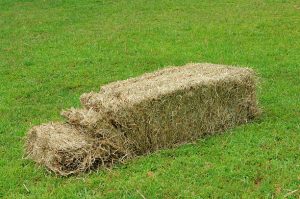Baling twine is a twine with a small diameter, made of sisal or synthetic materials, and is used for tying up fibrous materials. Its tensile strength ranges from 95 psi to 325 psi. It is commonly used in ropes, hay, and other agricultural products. It is also used for tying up large bundles of hay.
 There are many different colours of baling twine available. There is a colour for every purpose, including black for hay and green for paper. In addition, you can find different-coloured baling twine for different fields or paddocks. You can buy baling ties at any locally-owned or operated store or order them online. SilageWrap is an excellent resource for quality baling twine. It offers a wide selection of baling tying supplies, including various tying threads, tying wire, and baling spools.
There are many different colours of baling twine available. There is a colour for every purpose, including black for hay and green for paper. In addition, you can find different-coloured baling twine for different fields or paddocks. You can buy baling ties at any locally-owned or operated store or order them online. SilageWrap is an excellent resource for quality baling twine. It offers a wide selection of baling tying supplies, including various tying threads, tying wire, and baling spools.
Baling twine is essential for tying up bales. Automatic balers also use it for binding. It was originally made of natural fibres, but hemp was too stiff to baling twine. Today, sisal is used to make bales, including the most popular type, the SilageWrap. These are two kinds of twines. One is for the tying of hay, and the other is for the baling of newspapers.
If you want to make your baling tying twine, you can buy it in a variety of different colours. You can buy the same colour for two different balers or different uses. Try different colours for your baling tying materials, or try a different colour for each type. You can also find a variety of different-coloured tying materials at a northwest-based store.
In the beginning, people were using natural fibres to make baler tying twine, but soon enough, these fibres were no longer strong enough. As a result, modern baling machines use synthetic or biodegradable materials. However, hemp is no longer a popular choice. It is too stiff. Nowadays, most manufacturers use sisal as their main baling material. With such a diverse range of applications, it’s possible to find the right twine to fit your needs.
There are a variety of uses for baling twine. The primary use of this twine is for baling. It can be used to mend fences, hold down a fence, or tie a tractor. Its various weights and colours make it versatile enough for multiple uses. While you can purchase a variety of colours and materials, it is recommended that you purchase a baling twine that will not unravel easily and can be reused over again. Check out www.silagewrap.com.au/small-square-baling-twine and get the highest quality baling twin.
Baling twine is an essential ingredient for any farm. It is used for many purposes, including mending fences and reattaching tractor parts. Its primary use is for baling, but it is also used for many other tasks. It comes in a variety of colours and weights. Listed below are some of the most common uses of baling twine. When purchasing, remember that the twine is usually a slit film that has been cut into squares.
Baling twine can mend fences, repair tractor parts, and hold up a fence, among its many uses. Apart from baling, it can make belts, tie a dog leash, and tie a blanket. Besides its traditional use, baling twine is also used for other purposes, including making hammocks. In addition, by using twine, you can reattach your tractor and other equipment.
Baling twine is essential for tying up bales. Automatic balers also use it for binding. It was originally made of natural fibres, but hemp was too stiff to baling twine. Today, sisal is used to make bales, including the most popular type, the SilageWrap. These are two kinds of twines. One is for the tying of hay, and the other is for the baling of newspapers.
Baling twine is available in different types and colours and different types. The smallest diameter is called baling twine, and it is used to tie up fibrous materials. It is typically sisal twine, but other materials can also be used. You can find twine at local farmer’s markets. You can also purchase them in spools and rolls. They are available in various colours and can be found in different sizes.
Another important feature of baling twine is its strength. The knots used in this twine are made of varying degrees of tensile strength. If you are storing your hay outdoors, you should use U-V stabilised twine. You can use sisal twine for lighter bales of hay made from a natural fibre. Some farmers also use sisal twine for its environmental benefits.
